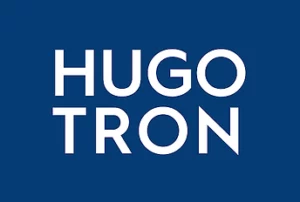Unlocking Strategy: From History to Modern Gaming Techniques
Strategic thinking has been a cornerstone of human progress, evolving from ancient military tactics to sophisticated modern gameplay. Understanding this historical trajectory not only enriches our appreciation of current games but also provides valuable insights into problem-solving, planning, and adaptability across various fields. In this article, we explore how the core principles of strategy are rooted in history and how they manifest in contemporary gaming, particularly through physics-based mechanics that simulate real-world constraints. These concepts serve as powerful educational tools, fostering critical thinking and tactical awareness. Table of Contents Historical Foundations of Strategy Core Principles of Strategy in Modern Contexts Physics-Based Mechanics as Strategic Tools Case Study: „Drop the Boss“ as a Modern Illustration Non-Obvious Strategic Insights in „Drop the Boss“ Bridging Historical and Modern Strategies Psychological and Cognitive Aspects of Strategy Beyond Gaming: Applying Strategy Concepts to Real-World Scenarios Conclusion: Unlocking Strategic Thinking Through Education and Entertainment Historical Foundations of Strategy The roots of strategic thought trace back to ancient military campaigns, where commanders relied on tactics that emphasized terrain, troop movements, and resource allocation. Classical strategists like Sun Tzu and Carl von Clausewitz formalized principles such as deception, the importance of terrain, and the need for adaptability. For example, Sun Tzu’s The Art of War advocates for understanding both the environment and the opponent to outmaneuver them effectively. Transitioning from physical confrontations to more abstract planning marked a significant evolution. Medieval and early modern warfare introduced concepts like supply lines and morale, which required foresight and resource management. Today, these principles underpin strategic decision-making in business, politics, and even digital environments. „The core lessons from history—adaptability, foresight, resource management—remain vital, whether commanding armies or managing virtual resources in a game.“ Core Principles of Strategy in Modern Contexts Modern strategy emphasizes maintaining momentum—keeping resources flowing and actions coordinated. For instance, in real-time strategy games or business operations, ensuring continuous resource acquisition and deployment prevents opponents from gaining an upper hand. Environmental factors such as obstacles, terrain, and even physics influence tactical decisions. Recognizing and exploiting these elements can be the difference between victory and failure. For example, in a game, understanding how obstacles like satellites or physical barriers affect movement can lead to more effective planning. Furthermore, the physical mechanics of a game—such as momentum—are not mere visual effects but strategic tools that players manipulate to their advantage. Physics-Based Mechanics as Strategic Tools Understanding physics in game design enriches strategic possibilities. Ragdoll physics, for example, introduces unpredictable yet controllable elements, making each interaction unique. Momentum, a key concept, determines how objects—like characters or projectiles—move and react, influencing timing and positioning. Games often incorporate challenges where players must navigate obstacles such as satellites with gray-blue bodies and yellow solar panels, which serve as both physical barriers and opportunities for tactical play. Recognizing how physics constrains or facilitates movement enables players to devise effective strategies. This simulation of real-world constraints fosters a deeper understanding of physical principles, enhancing strategic thinking beyond the game environment. Case Study: „Drop the Boss“ as a Modern Illustration „Drop the Boss“ exemplifies how physics-based gameplay can serve as a contemporary educational tool for strategic thinking. The game’s objective involves removing a boss character by navigating through physical challenges that leverage ragdoll physics and momentum. The game’s mechanics rely heavily on physical comedy, where characters react unpredictably to forces, creating entertainment that simultaneously requires strategic planning. For example, players must ensure that their actions maintain sufficient momentum; if it reaches zero, the attempt fails, highlighting the importance of timing and force application. Navigating obstacles like satellites with gray-blue bodies and yellow solar panels demands understanding how physical barriers influence movement, encouraging players to develop tactical approaches rooted in physics principles. To experience such mechanics firsthand, explore the drop the boss free demo. Non-Obvious Strategic Insights in „Drop the Boss“ Beyond obvious tactics, the game teaches players to leverage physics for tactical advantages. For instance, timing a character’s fall to maximize momentum or exploiting environmental elements like satellite positions can turn the tide of gameplay. Recognizing the importance of environmental cues and physical constraints fosters a deeper strategic intuition. Mastery involves managing momentum to ensure successful interactions, illustrating how physical principles underpin effective decision-making. Bridging Historical and Modern Strategies Historical military tactics and contemporary physics-based gameplay share core principles: adaptability, foresight, and resource management. For example, just as ancient generals adjusted their strategies based on terrain, modern players manipulate physical environments to achieve goals. Modern games serve as educational platforms, illustrating timeless strategic concepts through interactive experiences. These tools help players develop skills like anticipatory thinking and resource allocation, applicable far beyond gaming. „Understanding the continuity of strategic principles across eras enhances our ability to adapt and innovate in various domains.“ Deep Dive: Psychological and Cognitive Aspects of Strategy Anticipating opponent moves and environmental responses is crucial in both historical battles and physics-based games. Developing this foresight involves recognizing patterns and managing cognitive load, especially when physics introduces unpredictability. Repeated gameplay and experimentation foster strategic intuition, enabling players to predict outcomes more accurately. This iterative process mirrors military training exercises and tactical planning in real-world scenarios. Beyond Gaming: Applying Strategy Concepts to Real-World Scenarios Lessons from physics-based game mechanics translate into business and decision-making. Concepts like momentum and obstacle navigation serve as metaphors for managing projects, navigating market challenges, or planning logistics. Physical principles encourage creative problem-solving, fostering innovative approaches to complex problems. Interactive experiences like games stimulate strategic thinking that can be applied to real-world challenges. Conclusion: Unlocking Strategic Thinking Through Education and Entertainment Integrating historical knowledge with modern game mechanics enhances our understanding of strategy as a dynamic and adaptable skill. Games like drop the boss free demo exemplify how physics-based challenges can teach core strategic concepts in an engaging way. Fostering a mindset that values adaptability, awareness of physical principles, and environmental navigation prepares individuals to succeed in diverse contexts, from ancient battlefields to contemporary digital environments.
